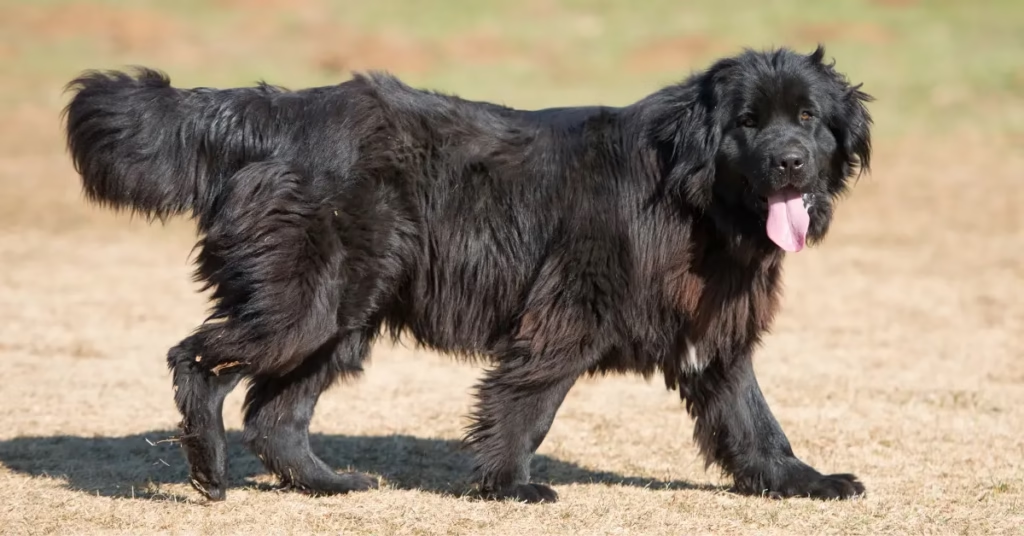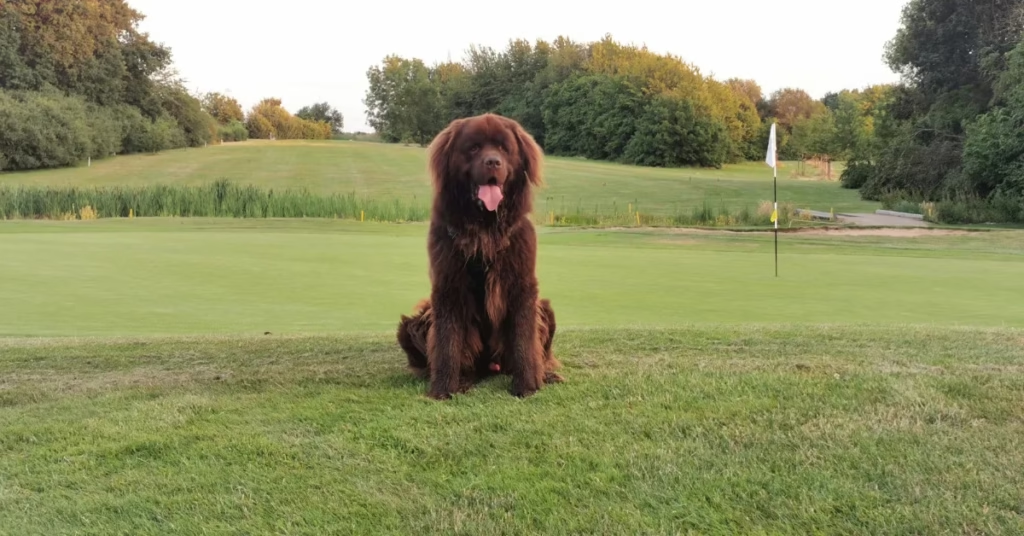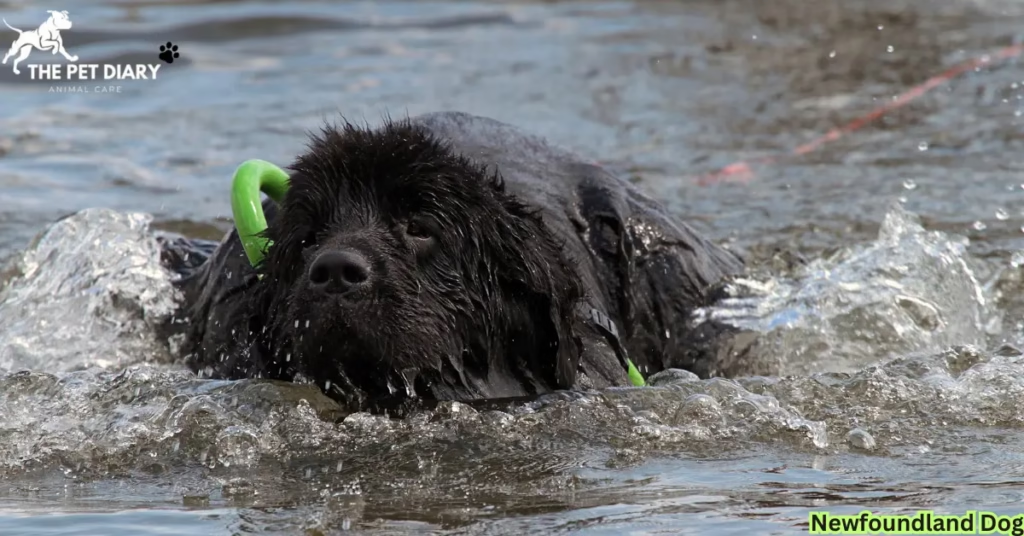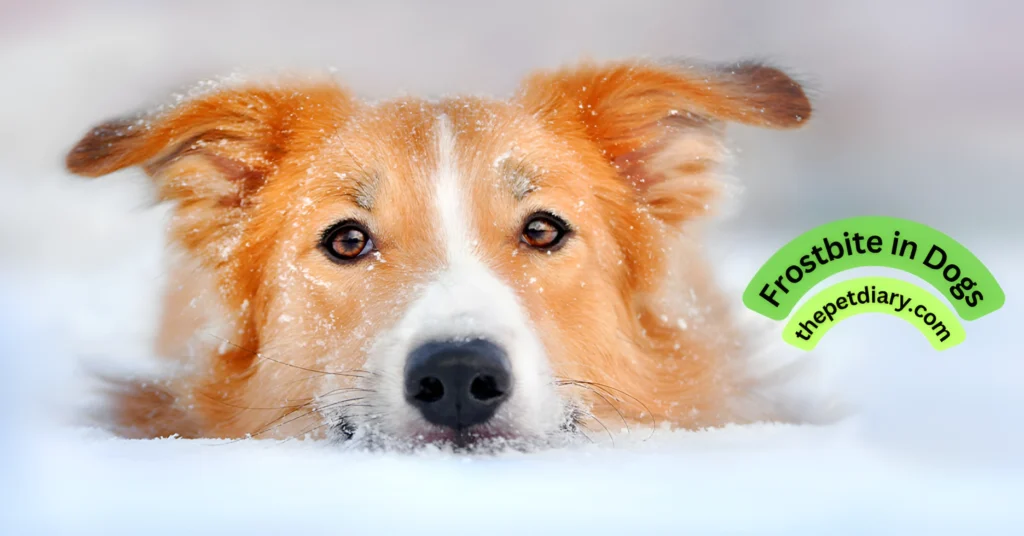The Newfoundland dog is a legendary working breed renowned for its strength, intelligence, and sweet disposition. Bred to assist fishermen in the icy waters of Newfoundland and Labrador, these dogs earned fame for lifesaving water rescues and unmatched loyalty. This in-depth guide explores everything about the Newfoundland breed of dog, from history and appearance to training, health, and ownership costs.
History and Origin of the Newfoundland Dog
The Newfoundland breed originated along the rugged Atlantic coast of Newfoundland and Labrador Canada, where early fishermen needed strong, dependable companions. These dogs hauled nets, retrieved fish, and performed heroic water rescues. Their thick, water-resistant double coats and webbed feet made them ideal for cold ocean work.
Through centuries of selective breeding, the Newfoundland dog breed developed its characteristic size, endurance, and famously gentle temperament, earning the nickname “Gentle Giant of the Sea.”
Physical Characteristics and Size
Giant Build and Coat:
The Newfoundland dog size is one of the largest in the canine world. Adult males typically weigh 130–150 lbs (59–68 kg), while females range from 100–120 lbs (45–54 kg). Their dense, double-layered coat protects them in frigid water and harsh climates. Strong bones, a broad head, and webbed paws make them excellent swimmers and working companions.
Coat Colors:
The coat colors of a Newfoundland are as distinctive as their personality, and each variety adds to the breed’s striking presence:
- Black: The most common and iconic color, showcasing a deep, glossy hue that highlights the breed’s majestic outline.
- Brown Newfoundland: A rich chocolate shade ranging from milk-chocolate to dark espresso, often complemented by warm amber eyes.
- Grey Newfoundland dog (also spelled gray Newfoundland): A silvery, smoky coat that gleams in sunlight and offers a unique, regal appearance.
- Landseer (black and white): Named after painter Sir Edwin Landseer, this pattern features a brilliant white base with distinct black patches, creating an eye-catching, classic look.
Each color is equally valued and does not affect temperament or working ability. Some Newfoundlands even have subtle white chest markings regardless of their main coat color. Regular brushing helps maintain the natural sheen and prevents matting of these luxurious coats.
Distinct Features:
- Massive, muscular frame with a broad head
- Deep chest and powerful, webbed paws for swimming
- Soft, expressive eyes reflecting their calm nature
Related Post: Leonberger Dog: Price, Care, Training & Living with a Gentle Giant
Temperament and Personality

The Newfoundland dog’s reputation as a gentle giant is well deserved. These dogs are:
- Exceptionally patient and affectionate with children
- Highly social and friendly toward strangers and other pets
- Natural watchdogs who remain calm yet protective
This loving temperament makes the Newfoundland breed of dog a perfect fit for families seeking a large, loyal companion.
Care, Health, and Lifespan
The average Newfoundland dog lifespan is about 8–10 years. To help them thrive:
- Provide a balanced diet to maintain a healthy weight.
- Schedule regular veterinary checkups for the hips, heart, and joints.
- Brush their thick coat at least twice a week to prevent matting.
Common health concerns include hip dysplasia, elbow dysplasia, and subvalvular aortic stenosis (a heart condition). Early detection and preventative care can significantly improve the quality of life.
Grooming and Maintenance
Brushing and Bathing:
Weekly brushing keeps shedding manageable and the coat healthy. A professional grooming session is recommended every 6 to 8 weeks to maintain their dense double coat.
Exercise:
Despite their size, Newfoundland dogs are moderate-energy pets. Daily walks and occasional swimming sessions satisfy their activity needs and keep their joints flexible.
Training and Socialization
Early obedience training is essential for a Newfoundland dog puppy to grow into a well-mannered adult.
- Use positive reinforcement. These dogs respond best to praise and treats.
- Introduce them to different people, pets, and environments during puppyhood to build confidence.
With consistent guidance, the Newfoundland dog breed becomes a calm, reliable family protector.
Nutrition and Feeding Tips
Feed high-quality large-breed dog food rich in protein and omega fatty acids for joint and coat health. Divide meals into two or three portions daily to reduce the risk of bloat.
Newfoundland Dog Price and Cost of Ownership
The Newfoundland dog price varies depending on the breeder’s reputation, location, and bloodline:
- Pet-quality Newfoundland dog puppy: $1,200–$3,000 USD
- Champion or show bloodline puppies: $3,500+
- Adoption from a Newfoundland dog rescue: around $300–$600
Annual Expenses
Owning a giant breed means budgeting for food, health care, and grooming.
| Expense Category | Estimated Annual Cost (USD) |
|---|---|
| High-quality food | $1,000 – $1,500 |
| Veterinary care | $500 – $1,000 |
| Professional grooming | $300 – $600 |
| Training & supplies | $200 – $500 |
| Miscellaneous essentials | $300 – $700 |
Pet insurance can add $400–$800 per year, but it protects against unexpected medical bills.
Choosing Reputable Newfoundland Dog Breeders

Working with responsible Newfoundland dog breeders, also known as Newfoundland breeders, is key to finding a healthy puppy.
Checklist for ethical breeders:
- Provide health clearances for hips, elbows, and heart
- Offer clean, well-maintained facilities
- Allow you to meet parent dogs and ask questions
Avoid puppy mills and unverified online sellers.
Popular Mixes and Color Variations
The Newfoundland breed of dog is admired in pure form and through mixes.
Newfoundland Poodle Mix
The Newfoundland poodle mix (Newfypoo) blends the Newfoundland’s gentle personality with the Poodle’s low-shedding coat—ideal for allergy-sensitive families.
Lab Newfoundland Mix Dogs
Crosses such as the black lab mixed with Newfoundland or other lab Newfoundland mix dogs combine the Lab’s playfulness with the Newfoundland’s loyalty.
Color Options Recap
Remember, whether it’s the brown Newfoundland, classic black, or the eye-catching grey Newfoundland dog, every color shares the same loving temperament and working ability.
Size & Growth Chart
| Age (Months) | Male Weight (lbs) | Female Weight (lbs) |
|---|---|---|
| 3 | 40–55 | 35–45 |
| 6 | 70–90 | 60–75 |
| 12 | 130–150 | 100–120 |
This chart helps track the healthy development of your Newfoundland dog puppy.
Adoption and Newfoundland Dog Rescue
Adopting from a Newfoundland dog rescue gives a deserving dog a loving home and can be more affordable than buying a puppy. Many rescues partner with breed clubs to match dogs to suitable families.
Newfoundland and Labrador Heritage
The breed’s homeland, including places like Gander Newfoundland and Labrador, celebrates the Newfoundland’s lifesaving legacy with festivals and monuments.
Visiting Newfoundland and Labrador Canada, offers insight into the rugged environment that shaped this remarkable breed.
Fun Facts
- Equipped with webbed feet and a water-resistant double coat, Newfoundlands are natural swimmers.
- Renowned for heroic water rescues and gentle nature.
- Their calm personality makes them outstanding therapy dogs.
Conclusion:
The Newfoundland dog is the ultimate gentle giant. A strong swimmer, loyal family companion, and courageous rescuer. Whether you bring home a Newfoundland dog puppy, adopt through a Newfoundland dog rescue, or choose a mix like the Newfoundland poodle mix, you’ll gain a devoted, affectionate friend. 👉 Read the full guide here: ThePetDiary.com
FAQS:
1. What is the average Newfoundland dog’s lifespan?
Typically, 8–10 years with proper diet, exercise, and regular veterinary care.
2. How big does a Newfoundland dog get?
Adult males weigh about 130–150 lbs; females around 100–120 lbs.
3. Are Newfoundland dogs good family pets?
Yes, they are gentle, affectionate, and patient, excellent with children and other pets.
4. How much does a Newfoundland dog puppy cost?
From reputable breeders, expect $1,200–$3,000, depending on lineage and location.
5. How often should a Newfoundland be groomed?
Brush at least twice a week and schedule professional grooming every 6–8 weeks.
6. What colors do Newfoundland Dogs come in?
Black, brown Newfoundland, grey Newfoundland (gray), and the black and white Landseer pattern.


